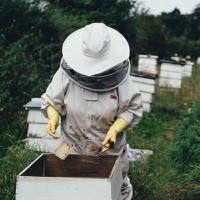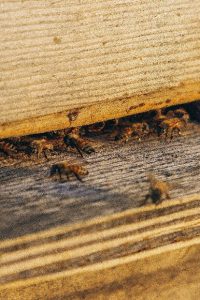Successful treatment for deadly honey bee viruses found in US study

US-based researchers have successfully treated honey bees with a novel immune system booster for deadly viruses causing losses of the critical pollinator on a global level. Honey bees play a crucial role in our food system and production by pollinating crops, and their population decline, partly caused by viruses, is a direct danger to human health.
The scientists found that bees could fight many viruses when encouraging their cells to produce free radicals.
“This approach is especially exciting because it doesn’t just target a specific type of virus but helps with many different viruses,” says Daniel Swale, senior author of the study and the associate director for training and special projects in the UF Emerging Pathogens Institute and associate professor in the UF/IFAS entomology and nematology department.
“Additionally, we demonstrated that our treatment works in the lab and in colonies containing 80,000 bees in the field. This is huge because, in a hive setting, bees are exposed to so many different viruses and stressors, so successfully controlling viruses in that environment is very encouraging,” says Swale.

The protein was mixed with sugar water and drizzled over the honeycomb, making it accessible for the bees to consume.
A threatened specie
Michael Simone-Finstrom, a co-author of the study and a molecular research biologist with the ARS Honey Bee Breeding, Genetics and Physiology Research Lab in Louisiana, US, says that “varroa mites [a parasitic mite that attacks honey bees] are the number one cause of honey bee losses, but it’s important to point out that varroa mites, aside from physically weakening bees, also transmit viruses to bees.”
The researchers used a protein found in the cells of bees and most other “living things,” the compound pinacidil, which alters potassium ion channels and produces more free radicals.
“One of the big takeaways from this study is that potassium ion channels can be a target for improving immune system function in honey bees and possibly other insects. We would like to find a molecule, such as a peptide or a new technology that has the same effect as pinacidil but is more accessible to beekeepers,” says Swale.
The protein was mixed with sugar water and drizzled over the honeycomb, making it accessible for the bees to consume. The treatment showed protection from the Israeli acute paralysis virus, deformed wing viruses A and B, black queen cell virus and Lake Sinai viruses 1 and 2.
“While free radicals are often bad for cell health, they can be therapeutic in moderate amounts, as we see in this study. In this case, the additional free radicals signal to the immune system to ramp up, which helps the bees fight off viruses,” says Troy Anderson, a co-author of the paper and a professor of entomology at the University of Nebraska-Lincoln.
“If we can mitigate viruses in honey bee colonies, that would be a big step forward,” Simone-Finstrom adds.
The team of researchers says there are challenges in treating all commercial honey bees, although it “opens the door” to identify other, and maybe more cost-effective, treatments.
We are here to share current happenings in the bee industry. Bee Culture gathers and shares articles published by outside sources. For more information about this specific article, please visit the original publish source: Successful treatment for deadly honey bee viruses found in US study (nutritioninsight.com)








